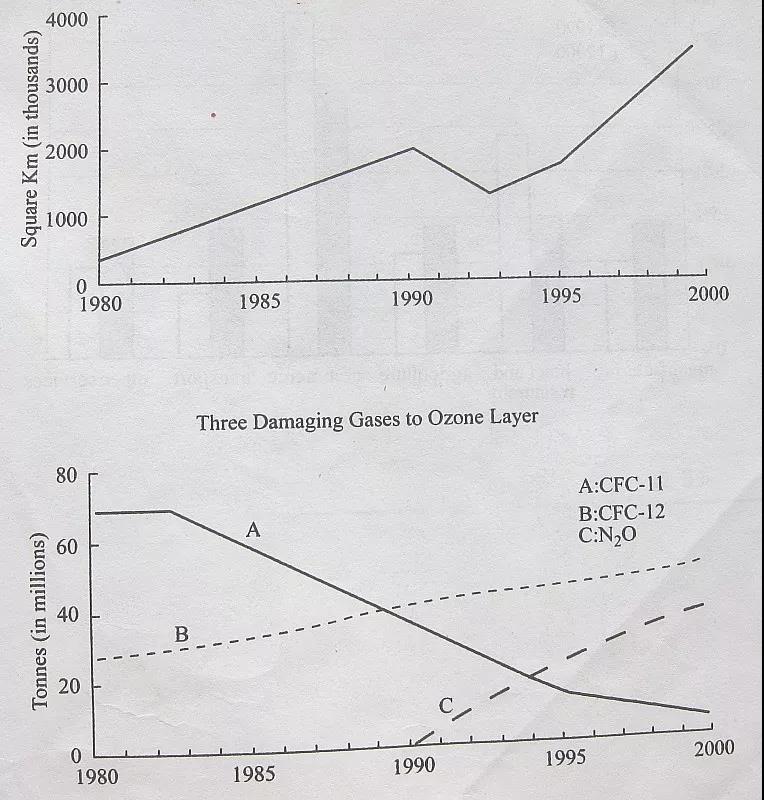2018年2月10日雅思写作考试回忆及解析
来源 :中华考试网 2018-02-24
中TASK 1
The graphs below show the size of the ozone hole over Antarctica and the production of three ozone-damaging gases from 1980 to 2000.

Word count: 195
The graphs demonstrate the change of ozone-hole size over Antarctica and the emission of three different ozone-damaging gases from 1980 to 2000.
In general, the ozone hole size enlarged, increasing from 500 thousand square Km to about 2000 thousand square Km. But it witnessed a sudden decline to about 1200 thousand square Km from 1990 to 1994 before increasing sharply to almost 4000 thousand square Km.
The second chart is about the emission of some destructive gases. In 1980, CFC-11 (A) was the major gas destroying ozone layer, which mounted to 70 million tonnes. And CFC-12 (B) was almost 1/3 of CFC-11, with the amount of 25 million tonnes. In the next two decades, A witnessed a sharp decrease to almost 5 million in 2000 while B kept increasing stably to 50 million tonnes, becoming the dominant damaging gas. The emission of N2O (C) appeared in 1990 and then increased dramatically to about 40 million tonnes in a short period of just 10 years, thus becoming the second important damaging gas.
To sum up, the ozone hole was becoming larger and the main reason was the increasing emission of the gas of CFC-12 and N2O.
